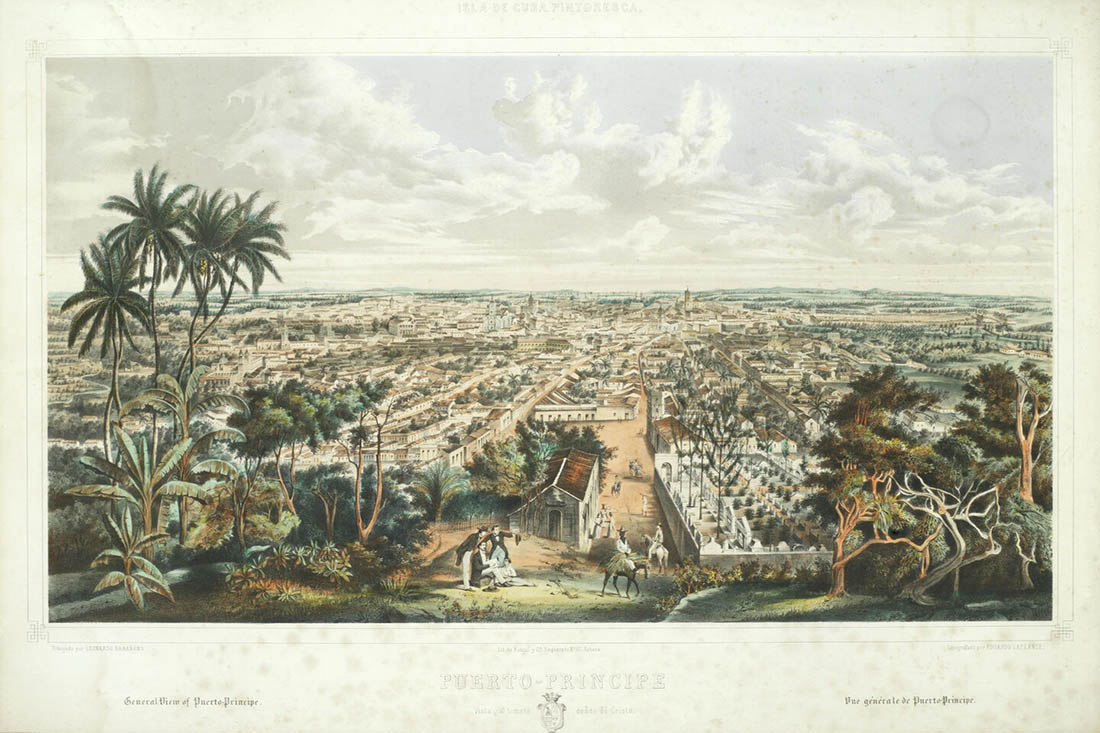Juan Torres Lasqueti, (1816-1900) risked his life in his work as a communicator, courier or liaison, in the Ten Years’ War (1868-1878). He also distinguished himself for his trade of delving into and systematizing the memory of Camagüey collected in the text: Collection of historical-geographical and statistical data of Puerto Príncipe and its jurisdiction.
Something original from my dear Camagüey
At the beginning of the book, Lasqueti notes that his vehement desire to know the particular history of the Province sprouted in childhood, listening to the elders narrating details of the construction of the temples and bridges.
The unwavering will of Juan Torres allowed him to overcome obstacles, collect texts, data, notes, memoirs, foreign guides, newspapers, in short, a considerable number of diverse sources to recreate and create history. The chronological perspective prevailed. And the recovery of historical facts is similar to his time, where the positivist paradigm was hegemonic.
They spoke the language of the Lucayos
The first part of the Lasqueti text describes the physical characteristics of the first inhabitants, their customs, languages, construction typology, cultural and sociological practices, and behavior patterns that were violently cut short by the process of conquest.
The interesting thing about this first part is that he contextualizes the locality with the entire island territory based on toponyms, and geographies located with the aboriginal presence. It then maintains the founding date of the Villa de Santa María del Puerto del Príncipe in 1514 and from that date until 1797 weaves together historical, cultural, religious events and underlines the behavior of the patrons of power and families, whose founding surnames stamped the sign sociopsychology of the region.
Lasqueti and the insurrection of José Antonio Aponte in Puerto Príncipe
Torres Lasqueti considered that the 19th century stood out in a multilateral way for Puerto Príncipe. Even the fabled legend or reality of the Brave Indian begins the second chapter of the text Collection of data… where the terror of the counter-hegemonic modulated daily customs.
To surprise! The much-hidden Aponte insurrection of national scope is described by Juan. He makes a construction from the Chapter Acts: “So, being legitimately qualified as an insurrection, and manifesting the immense danger that threatens us, there being no doubt that extraordinary events need the same measures, he agreed to take them.”
Since then, the Court has remained in permanent session, as has the Cabildo. The City Council agreed to pay 100 pesos to those who capture, alive or dead, the blacks named Pedro, Manuel and Pablo, slaves of Don Juan de Dios Betancourt. The sum of another 100 pesos more was added, offered by the Mayor Juan Recio from his own pocket.
Eight blacks were sentenced to death by hanging on January 29th, and on the 31st to St. Augustine, Florida.
The insurrectionary movement of blacks is not limited only to this Villa, Lasqueti points out, also taking this information from the Chapter Acts; it also extended to the jurisdictions of Holguín, Bayamo, Trinidad and Havana, where the free dark-haired caudillo José Antonio Aponte was hanged.
With this end, violent and totally exemplary, of warning, it was thought that the insurrectionary spirit ended.
Lasqueti and the cry of independence on July 4th, 1851
Lasqueti states that: “On July 4th [1851] they sang the cry of independence in San Francisco de Jucaral, jurisdiction of Las Tunas, D. Joaquín de Agüero y Agüero with fifty companions who had met in the Loma de San Carlos, Cascorro party, where they were sworn in and the minutes were read in which it was recorded.”
Those of Agüero, like those of Aponte, had a terrifying end, since the latter were also executed on August 12th at 6 in the morning in the Sabana de Méndez: Agüero, Betancourt, Zayas and Benavides.
On October 11th, 1868, Puerto Príncipe under siege
Since October 11th, the city breathed airs of a Cry of Independence given on the 10th by Atty. Carlos Manuel de Céspedes at his La Demajagüa mill, Yara. Puerto Príncipe woke up under siege with artillery pieces placed in La Merced square. Lasqueti points out that on the night of November 3rd, the young people from Puerto Príncipe decided to support the Céspedes uprising.
To never forget
Juan Torres Lasqueti in the office of historian of his time wrote down, recreated and created the historical memory of the town in the context of the nation. In this sense, the historian Yosef Yerushalmi asserts: “If I am given a choice, I will take the side of the excess of history, so much more powerful is my terror of forgetting than the fear of having to remember too much”.
Bibliography
Torres Lasqueti, Juan (2016) Colección de datos históricos-geográficos y estadísticos de Puerto Príncipe y su jurisdicción, Ediciones El Lugareño, Camagüey, Cuba.
Translated by: Aileen Álvarez García






